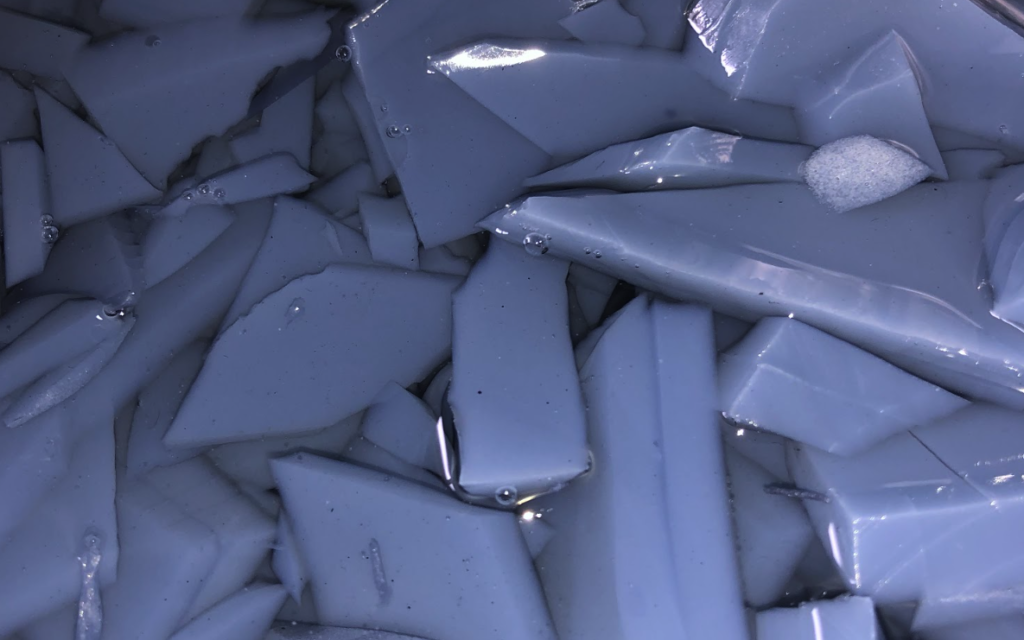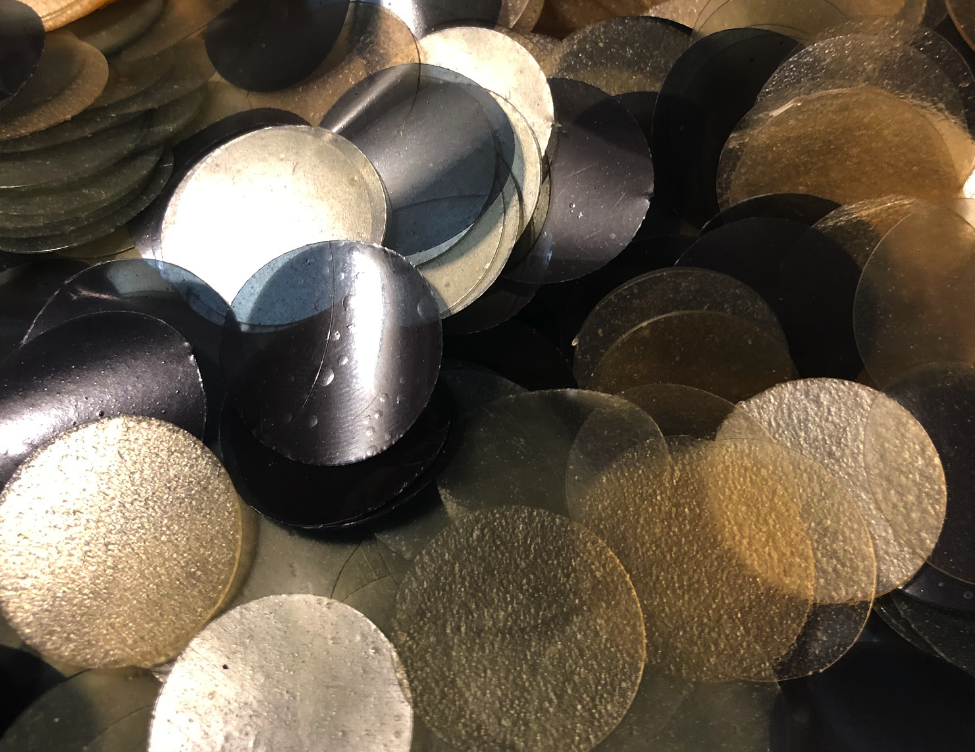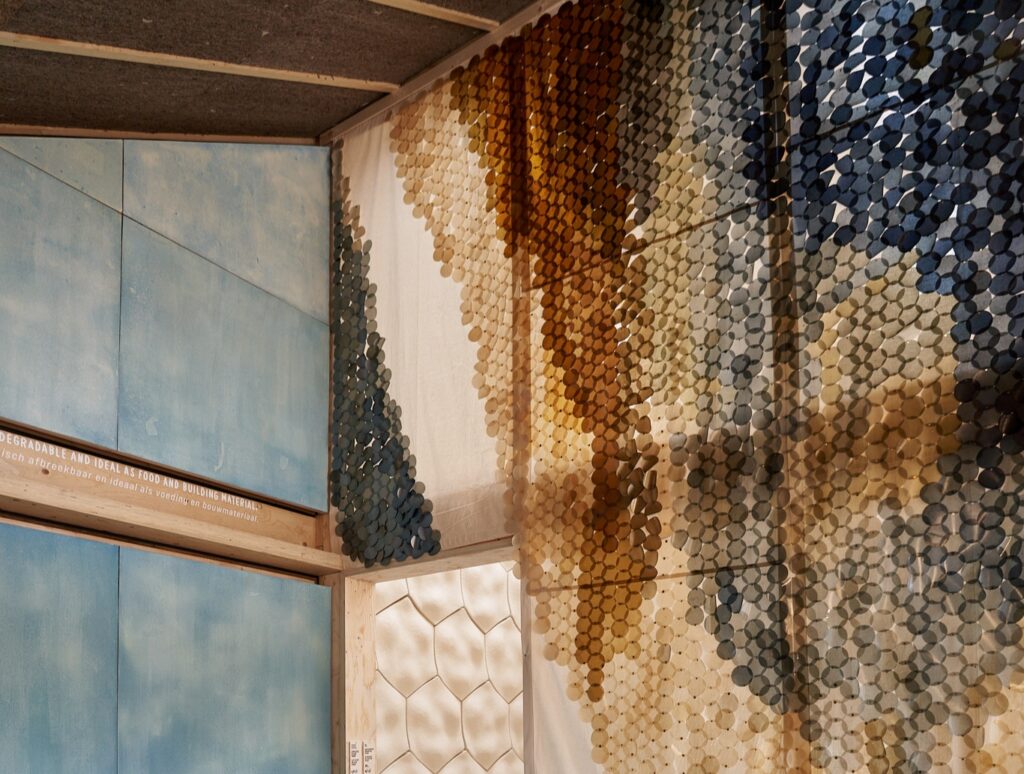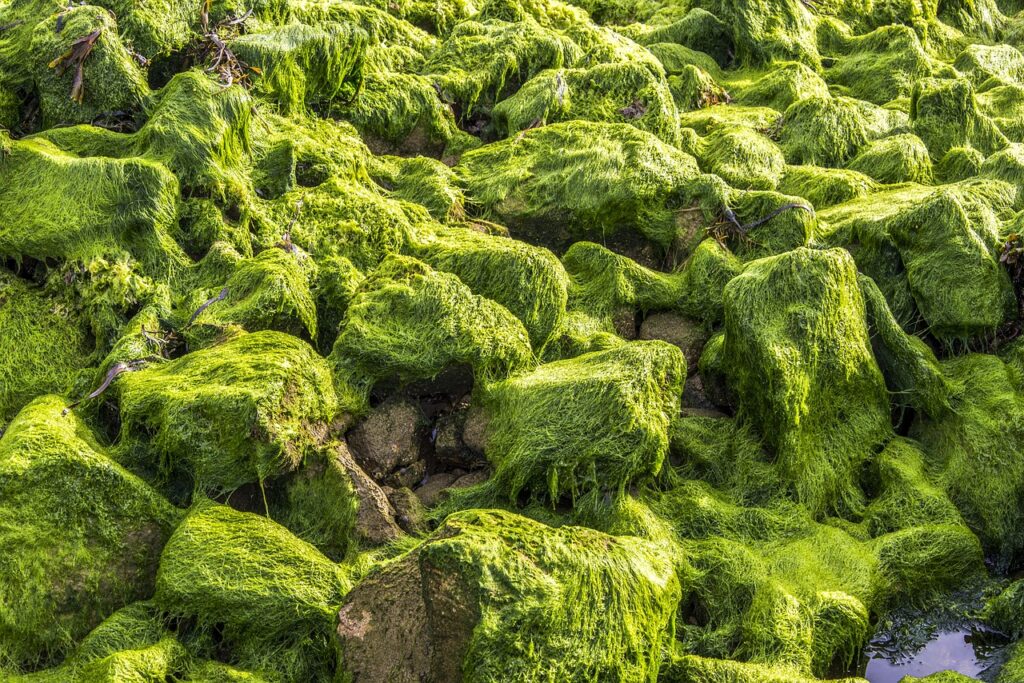This fully compostable biopolymer consists of agar, glycerol and natural dyes. Agar is an algae-based gelatin substitute and glycerol is a waste product of soap production. The biofabric is colored with plant-based dyes that also determine the level of transparency and the matt or glossy finish. Algae textile is currently applied in fashion, accessories and packaging.
Algae textile is made of:
- Agar Agar, which is an extracted powder from a red algae
- Natural dye, or plant based dyes from various plants like algae, pea flower or turmeric
- Glycerol, which is a waste product of soap production
The production process
- The material is cooked for 10 minutes on an induction plate
- Afterwards, it is dried outside in the sun or in a drying container that is heated up by residual heat of a biogas power plant nearby.
- The material is dyed with leftover natural textile dye baths or different plant based dyes.


This fully compostable biopolymer is based on agar: a gelatin substitute made from algae.
Applied
The algae textile has been used for several fashion collections that have a strong focus on circularity as sequins or applications. The possibilities for this material go from fashion and accessories to packaging.


Environmental impact
- The material is fully compostable. The material is made by natural compounds and can be digested by microorganisms.
- The CO2 emission of the material production process is close to zero.
Health
- The material has no off-gassing and regulates the humidity of the room by reacting with the water and taking it out of the air.


